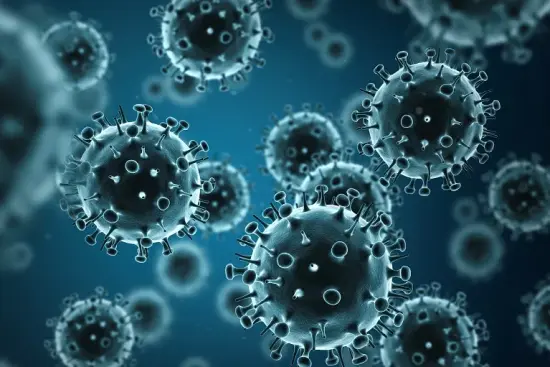
Syndromic respiratory illness surveillance programmes coordinated by the National Institute for Communicable Diseases (NICD) include pneumonia surveillance and two influenza-like illness (ILI) programmes: systematic ILI surveillance at public health clinics (ILI-PHC surveillance programme) and the Viral Watch programme (ILI-Viral Watch) at private practices. Respiratory samples collected from enrolled individuals meeting case definitions at sentinel sites were tested for influenza, respiratory syncytial virus (RSV), Bordetella pertussis and severe acute respiratory syndrome coronavirus 2 (SARSCoV-2) by real-time polymerase chain reaction.
Influenza was detected in all three programmes in 2020 (168/6 467, 2.6%) and 2021 (445/9 312, 4.8%). In 2020, influenza circulated mainly in the Western Cape Province prior to the start of the normal winter influenza season. In 2020, following the restrictions put in place for coronavirus disease identified in 2019 (COVID-19), influenza circulation decreased with no influenza season occurring (usually May to August). Influenza circulation was low at the start of 2021, but increased outside of the normal influenza season towards the end of 2021 (late spring, weeks 37 to 49). In the pneumonia surveillance programme in 2020, influenza A (H1N1)pdm09 (28/33, 84.8%) was most commonly detected followed by a few influenza B/Victoria (4/33, 12.1%) viruses. In 2021, the most common types and subtypes detected were influenza A (H1N1)pdm09 (108/217, 49.8%), influenza B/Victoria (57/217, 26.3%) and influenza A (H3N2) (35/217, 16.1%). Similar to influenza, no RSV season was observed in either year, although the virus was still detected in 2020 (643/6 467, 9.9%) and 2021 (522/9 312, 5.6%) in all three programmes. The most common RSV subgroup detected in the pneumonia surveillance programme in 2020 was RSV subgroup A (458/549, 83.4%), followed by RSV subgroup B (74/549,13.8%). In 2021, the most common RSV subgroups were RSV subgroup A (220/425, 51.8%) and RSV subgroup B (199/425, 46.8%). A total of 11 cases of B. pertussis was detected in 2020 (10/6 065, 0.2%) and 2021 (1/9 055, 0.01%) from ILI-PHC and pneumonia surveillance programmes.
SARS-CoV-2 testing commenced in March 2020 and was detected in all three programmes in 2020 (862/5 730, 15.0%) and 2021 (2 361/9 378, 25.2%). By the end of 2021, four periods of increased transmission had been observed, each driven by a different SARS-CoV-2 variant. The first was from week 21 to week 44 in 2020, peaking in week 30 and driven by the ancestral virus. The second and third periods of increased transmission were from week 52 of 2020 to week 10 in 2021, peaking in week 53 of 2020 (Beta variant), and week 24 to week 40 of 2021 peaking in week 29 (Delta variant), respectively. The fourth period of increased transmission, driven by the Omicron BA.1 variant, started in week 46 and was ongoing at the end of 2021. In the first two years of the COVID-19 pandemic, these surveillance programmes managed to monitor four pathogens (influenza, RSV, B. pertussis and SARS-CoV-2). With these surveillance programmes, we were able to report changes in transmission of respiratory pathogens and detect SARS-CoV-2 variants. This should be a sustainable platform to monitor for future changes in SARS-CoV-2 transmission and changes in epidemiology of other pathogens.


